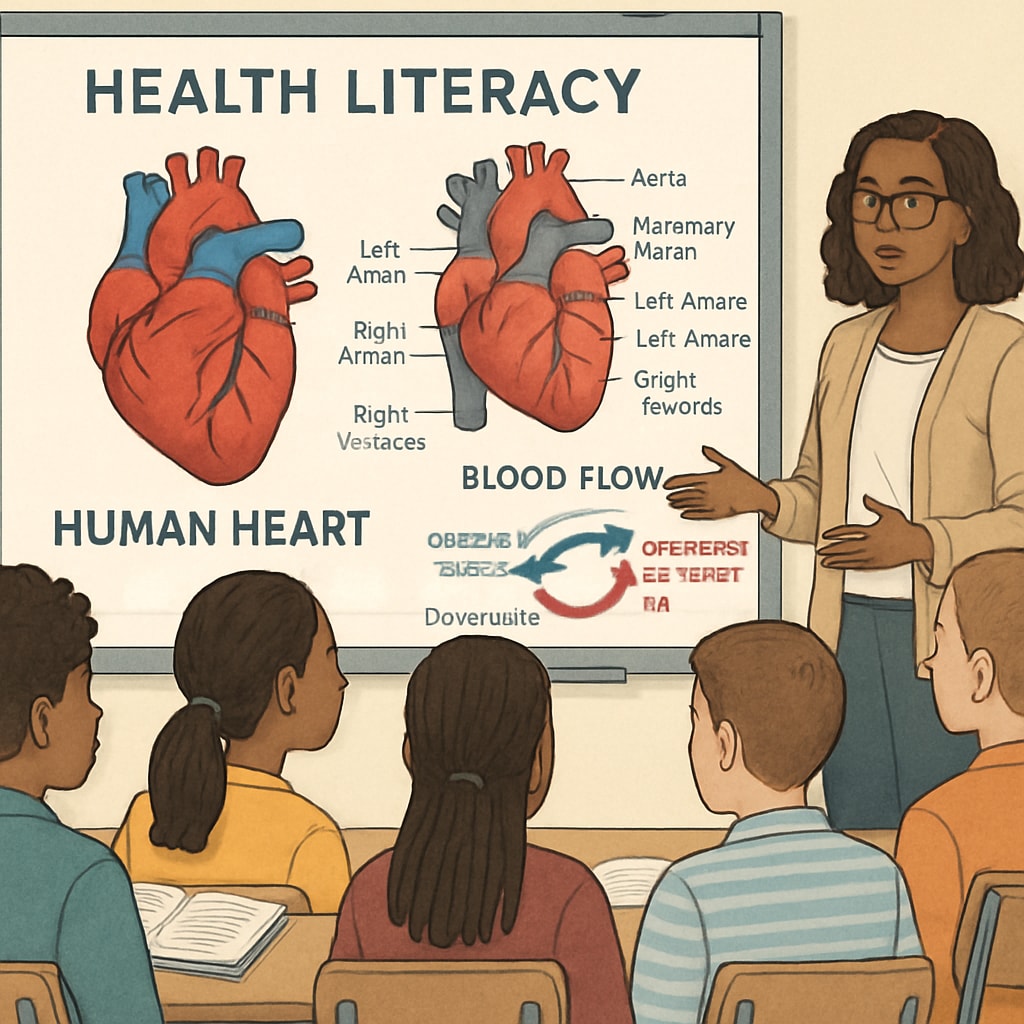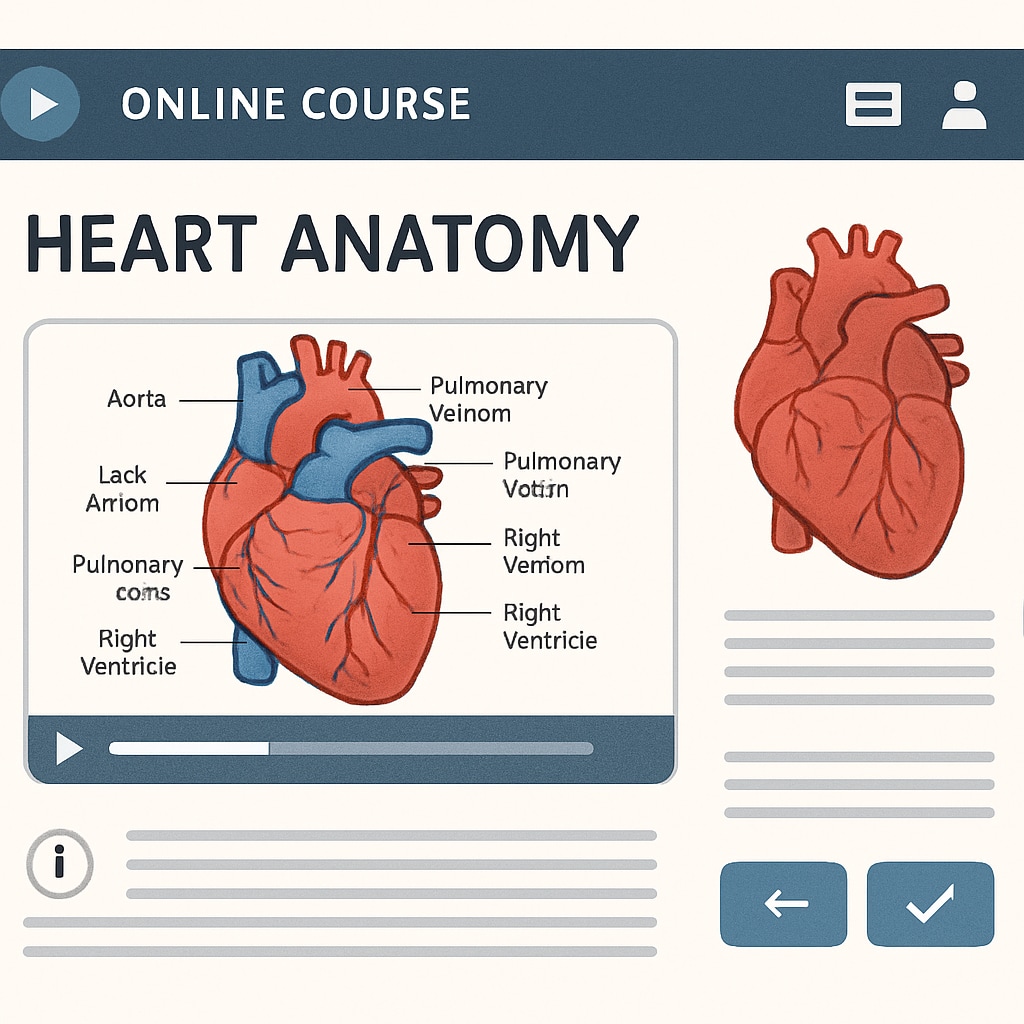In an era where health crises are becoming increasingly common, introducing medical knowledge to non-medical students has never been more critical. By incorporating topics like cardiology into K12 education through online courses, we can nurture health literacy and scientific thinking from a young age. This approach, often termed “cross-disciplinary medicine,” aims to prepare students to face future challenges with a better understanding of their bodies and the healthcare system.
Why Introduce Medicine into Non-Medical Education?
Traditionally, medical knowledge has been reserved for professionals within the healthcare sector. However, today’s interconnected world demands a broader understanding of medicine across various fields. For example, issues like heart disease impact millions globally, and a basic understanding of cardiology can empower individuals to make informed decisions about their health. Moreover, integrating medical topics into K12 education fosters critical thinking, encourages curiosity, and equips students with practical knowledge they can use throughout their lives.
According to a study by the Encyclopaedia Britannica, health literacy is directly linked to improved public health outcomes. Therefore, introducing medical education to younger audiences is not just beneficial—it’s essential.

How Online Courses Bridge the Gap
The emergence of online platforms has revolutionized education, making it more accessible and versatile. For K12 students, specialized online courses can provide a structured yet engaging way to learn about topics like heart health. These courses can use interactive tools, animations, and quizzes to explain complex subjects such as how the heart pumps blood or the risk factors for cardiovascular diseases.
For example, platforms like Khan Academy and other educational sites offer free or affordable modules that introduce anatomy and physiology in a simplified manner. By leveraging these resources, educators can ensure that students without a medical background still benefit from essential knowledge.

Building a Cross-Disciplinary Curriculum
To effectively integrate medicine into K12 education, educators need to adopt a cross-disciplinary approach. This involves combining elements of biology, chemistry, and even mathematics to create a well-rounded curriculum. For instance, a lesson on cardiology could include:
- Biology: Understanding the anatomy and function of the heart.
- Chemistry: Exploring how oxygen and carbon dioxide are exchanged in the bloodstream.
- Mathematics: Calculating heart rate and understanding statistical data related to cardiovascular health.
Such an approach not only makes learning more engaging but also demonstrates the interconnectedness of various fields, preparing students for multidisciplinary challenges in their future careers.
Challenges and Opportunities
While the idea of introducing medical knowledge to non-medical students is promising, it is not without its challenges. Educators may face a lack of resources, or students might find medical terms intimidating. However, with the right tools and a focus on making lessons relatable, these hurdles can be overcome. For example, teachers could use case studies or real-world examples to make the material more engaging.
Moreover, involving healthcare professionals as guest speakers or mentors can add an element of authenticity and excitement to the curriculum. This not only provides students with firsthand insights but also inspires them to consider careers in healthcare or related fields.
The Future of Health Literacy in K12 Education
The integration of medical knowledge into K12 education represents a significant step toward a more informed and health-conscious society. By leveraging online courses and adopting a cross-disciplinary approach, we can ensure that students are equipped with the tools they need to navigate an increasingly complex world. As a result, they will not only develop a deeper understanding of science but also gain the confidence to make informed decisions about their health and well-being.
In conclusion, “cross-disciplinary medicine” is more than just a buzzword—it’s a roadmap for preparing the next generation to face global health challenges with knowledge and resilience.
Readability guidance: This article uses short paragraphs, a mix of bullet points, and ample transition words (such as however, for example, and therefore) to enhance readability. The content is structured to maintain an average sentence length of 12–16 words, with minimal use of passive voice.


